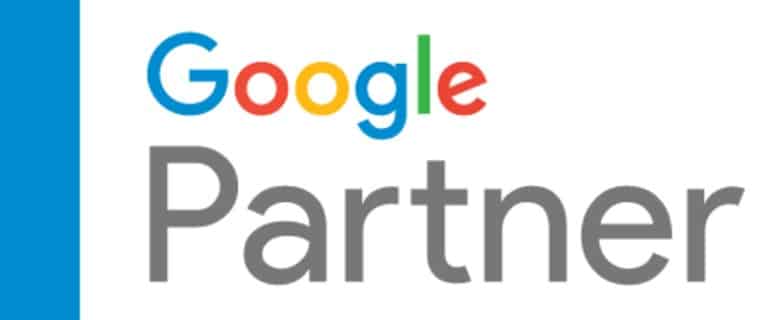Conversion Rate Optimization: How To Get More From Your Website
Conversion Rate Optimization (CRO) Gives You More From Your Website
As a business owner, you always want more- more website traffic, more customers, and more money.
Your website is your digital front door. It’s often the first impression your potential customers have of your business. That’s why it has to look good, be benefit-driven, and establish trust quickly. Generally, there are two ways to get more customers with your website.
First, you can drive more traffic through SEO, Google Adwords or social media marketing. The more visitors you get, the more likely they are to call you. Second, you can adjust your site so that more of your website visitors become paying customers. This is conversion rate optimization.
In today’s digital landscape, having a stunning website is not enough. To make the most of your online presence, you need to focus on maximizing your website’s conversion rate. In this comprehensive guide, we will delve into the essential strategies and techniques that will help your digital marketing agency, Make It Loud, and its clients achieve higher conversions. Whether you’re a small business owner, an e-commerce entrepreneur, or a marketing professional, implementing these proven CRO methods will undoubtedly elevate your online success.
Conversion Rate Optimization (CRO) is the systematic process of improving your website’s performance to encourage visitors to take desired actions. These actions can range from making a purchase, filling out a form, subscribing to a newsletter, or any other meaningful engagement that aligns with your business objectives. By optimizing your website, you can attract qualified traffic and convert more visitors into valuable customers.
Analyzing Your Current Conversion Rates
Before embarking on any optimization journey, it’s crucial to assess your current conversion rates. This involves evaluating key metrics such as bounce rate, exit rate, and conversion funnels. By identifying the strengths and weaknesses of your website’s performance, you can target specific areas for improvement and set measurable goals for your CRO efforts.
Optimizing Website Design and User Experience
A visually appealing website is just the beginning. To enhance your conversion rates, you must focus on optimizing the overall user experience (UX). This includes streamlining navigation, improving page load times, and ensuring mobile responsiveness. By creating a seamless and intuitive browsing experience, you can reduce friction and guide users towards the desired conversion actions.
Crafting Compelling Copy and Call-to-Actions
Words have the power to persuade, and in the realm of CRO, this holds true. By crafting compelling copy that resonates with your target audience, you can effectively communicate your value proposition and address their pain points. Additionally, strategically placed call-to-action (CTA) buttons and persuasive language can guide users through the conversion funnel and increase the likelihood of conversions.
Implementing A/B Testing and Personalization
A/B testing is a fundamental technique in CRO that involves comparing two versions of a webpage to determine which one performs better. By testing different elements such as headlines, layouts, colors, and CTAs, you can make data-driven decisions to optimize your website’s performance. Furthermore, personalization techniques, such as dynamic content and tailored recommendations, can enhance user engagement and conversion rates.
Leveraging Social Proof and Trust Signals
Building trust is crucial to driving conversions. Incorporating social proof elements, such as customer testimonials, reviews, and case studies, can instill confidence in your visitors and validate your offerings. Additionally, trust signals like security badges, industry affiliations, and money-back guarantees can further alleviate any concerns and encourage users to take action.
Enhancing Website Speed and Mobile Responsiveness
In the age of instant gratification, website speed is paramount. Slow-loading pages can significantly impact user experience and deter conversions. Optimizing your website for speed, minimizing server response time, and ensuring seamless mobile responsiveness are essential steps to keeping visitors engaged and improving conversion rates.
Harnessing the Power of Data and Analytics
Data-driven decision-making lies at the core of successful CRO. By leveraging website analytics tools, such as Google Analytics, you can gain valuable insights into user behavior, identify conversion bottlenecks, and optimize your marketing strategies. Continuously monitor and analyze your data to make informed adjustments and drive continuous improvements in your conversion rates.
Creating Persuasive Landing Pages
Landing pages play a vital role in conversion rate optimization. They are designed with a specific objective in mind, whether it’s to promote a product, capture leads, or encourage sign-ups. To maximize conversions, it’s essential to create persuasive landing pages that captivate visitors and drive them toward your desired action.
Start by ensuring a clear and concise headline that grabs attention and clearly communicates the value proposition. Use compelling visuals, such as high-quality images or videos, to engage visitors and enhance their understanding of your offering. Break down the content into scannable sections, using bullet points, subheadings, and concise paragraphs to make it easy for users to absorb the information.
Craft persuasive and benefit-driven copy that emphasizes the unique selling points of your product or service. Highlight the key features, benefits, and any exclusive offers or discounts available. Use persuasive language that taps into the emotions of your target audience and addresses their pain points directly. Incorporate customer testimonials and success stories to build trust and credibility.
To encourage conversions, incorporate a prominent and compelling call-to-action (CTA) button that stands out from the rest of the page. Use action-oriented language and create a sense of urgency, emphasizing the benefits of taking immediate action. Ensure that the CTA button is strategically placed and easily accessible throughout the page, allowing users to convert at any point without scrolling excessively.
Implementing trust symbols, such as security badges, privacy seals, or trust seals, can significantly boost visitor confidence. Display social proof elements, such as user reviews, ratings, or case studies, to provide further validation and create a sense of trust. Streamline the conversion process by minimizing form fields and eliminating unnecessary steps. The easier it is for visitors to complete the desired action, the higher the chances of conversion.
Regularly test and optimize your landing pages using A/B testing to identify the most effective elements and make data-driven improvements. Continuously monitor the performance of your landing pages, analyze user behavior, and make iterative adjustments to maximize conversions over time.
Implementing Retargeting Campaigns
Retargeting campaigns are a powerful tool for converting users who have previously visited your website but did not complete the desired action. By leveraging the concept of remarketing, you can re-engage these visitors and guide them back towards conversion.
Start by segmenting your audience based on their behavior and specific actions taken on your website. For example, you can create segments for users who abandoned their shopping carts, those who browsed specific product categories, or those who visited key landing pages. By tailoring your retargeting campaigns to these specific segments, you can deliver personalized and relevant messages that resonate with their interests.
Utilize display ads, social media platforms, and email marketing to reach your retargeting audience effectively. Display ads can be strategically placed on websites that your target audience frequently visits, keeping your brand top-of-mind and reminding them of the value they initially showed interest in. Social media platforms offer robust retargeting capabilities, allowing you to deliver tailored ads to users who have engaged with your content or visited your website. Email marketing can be used to nurture leads and re-engage users through personalized messages and exclusive offers.
Craft compelling ad creatives that reinforce your value proposition and highlight the benefits of converting. Use persuasive language, captivating visuals, and a clear call-to-action that directs users back to your website. Consider offering incentives, such as discounts or free trials, to entice users to return and complete the desired action.
Implement frequency capping to avoid overwhelming users with repetitive ads. Set frequency limits to ensure that your retargeting ads are seen enough times to remain effective, but not to the point of annoyance. Continuously monitor the performance of your retargeting campaigns, analyze click-through rates, conversion rates, and return on ad spend (ROAS). Make data-driven optimizations by adjusting ad placements, messaging, or targeting parameters to improve campaign effectiveness.
Remember to strike a balance between retargeting and respecting user privacy. Adhere to best practices and relevant regulations to ensure that your retargeting efforts are compliant and maintain a positive user experience. Retargeting campaigns, when executed strategically, can be a powerful tool in converting lost leads and maximizing your website’s overall conversion rate.
Conclusion
Conversion rate optimization is a continuous and iterative process that requires a deep understanding of your target audience, meticulous testing, and a commitment to ongoing optimization. By implementing the strategies outlined in this guide, your digital marketing agency, Make It Loud, and its clients can unlock the true potential of their websites, driving more conversions and achieving greater online success. Remember, CRO is not a one-size-fits-all approach. Experiment, learn from your data, and adapt your strategies accordingly to stay ahead in the competitive digital landscape.



